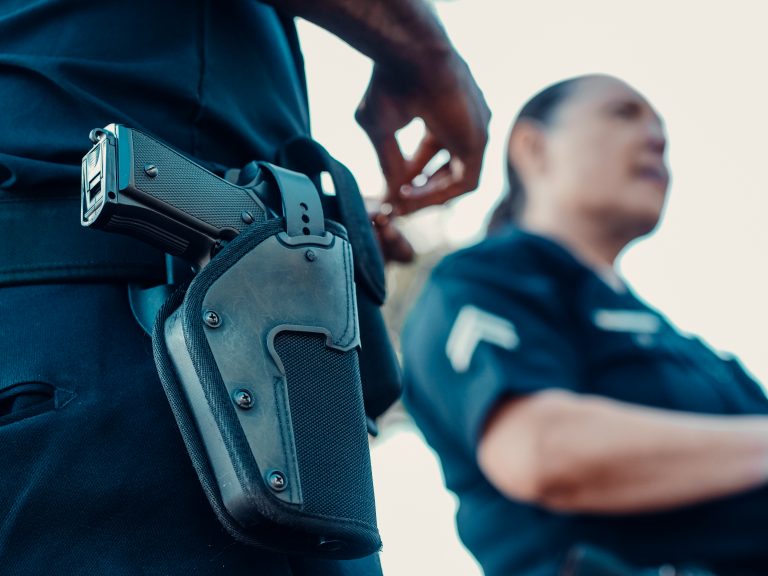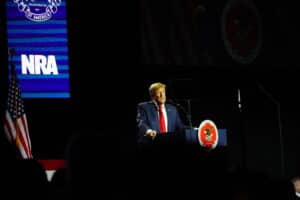Police in California keep getting caught illegally trafficking guns. What’s causing this phenomenon?
California is one of the only states in the country with what is known as a “handgun roster.” Under the Unsafe Handgun Act, only handguns deemed “safe” are eligible to be placed on California’s roster of certified firearms approved for civilian sale. Handguns deemed “unsafe” are generally unavailable for commercial sale in the state, with one crucial exception: law enforcement.
As the law is currently written, members of law enforcement are free to purchase and use “unsafe” handguns. As a new LA Times report uncovered, some officers use that carveout to turn an illicit profit in secondhand gun sales.
“The investigators questioned whether the officers were selling more guns than they should be under state and federal laws, particularly as some of the guns they’d sold were ‘off-roster,’” the report said. “In California, older firearms without certain safety features are excluded from an approved ‘roster’ of guns that can be commercially sold in the state. However, the law allows for law enforcement officers to still purchase those weapons—which, because their sale is restricted, are worth a lot of money.”
And the scandal documented in the report is certainly not the first time that California police officers have illegally profited off of their handgun roster exemptions.
Why Does This Happen?
This keeps happening because of the criteria by which California determines which handguns are safe or not and the propensity for highly desirable makes and models to wind up on the “unsafe” list.
To be deemed safe, handguns are required to possess certain features. Semiautomatic pistols, for example, must have a manual safety, a chamber load indicator, a magazine disconnect mechanism if it has a detachable magazine, and microstamping technology.
While most of those features come standard on many modern pistols—or they are relatively easy for gun makers to accommodate with separate California compliant models—the microstamping mandate is a different story. Microstamping is a process that uses a tiny laser to engrave a unique serial number on a gun’s firing pin so that, in theory, it imprints on the primer of discharged ammunition.
Proponents of the technology argue that it aids law enforcement in identifying guns used in crime. Opponents, however, have pointed out serious flaws.
“Microstamping is unproven and unworkable technology,” Larry Keane, Senior Vice President of the National Shooting Sports Foundation (NSSF), wrote in a March 2021 article. “Todd Lizotte, who holds the patent for the sole-source microstamping technology, recognized this reality in a peer-reviewed study: ‘Legitimate questions exist related to both the technical aspects, production costs, and database management associated with microstamping that should be addressed before wide-scale implementation is legislatively mandated.’”
What is the Result?
Because of the serious concerns surrounding the feasibility and cost of implementing microstamping technology—combined with the litany of other features restrictions under existing California law—many firearms manufacturers have decided it’s not worth it to continue making new California compliant firearms.
This has resulted in bizarre bifurcations between allowable handgun models with seemingly no difference in safety features. For example, the Glock 19—likely the best-selling handgun of all time—is only legal for civilian sale in California in its 23-year-old Generation 3 version. Meanwhile, its newer Generations 4 and 5 counterparts are deemed too “unsafe” to trust in civilian hands.
The NSSF has documented the effect of microstamping requirements on an already constrained supply of lawfully available handguns in the state, noting that no new handguns have been approved since the microstamping requirement was enacted.
“When the initial microstamping law took effect in 2013, there were 953 pistols on the roster. As of November 2020, there were only 497,” the group said.
Exacerbating this issue is the recently passed Assembly Bill 2847. Set to go into effect in July of 2022, it will automatically remove three previously approved handguns from the roster for every new model the state approves.
The result of all of this is a diminishing supply of handguns in a state that, despite popular misconception, actually contains a fair amount of gun owners and has seen a massive spike in demand for guns since 2020.
Until the technology becomes feasible and desirable for gun manufacturers, or as long as the exemption for law enforcement remains in place, expect to see corruption stories continue out of California police departments. As the supply of legal-to-purchase handguns continues to dwindle, excluding ever more models of popular pistols enjoyed safely by gun owners across the country, the demand for obtaining them through unscrupulous means is sure to continue.
For some police, that demand will inevitably create enough incentive to work as illegal intermediaries.
UPDATE 12-5-2021 9:57 AM: This piece has been corrected to show California is not the only state with a handgun roster. Other states, including Maryland and Massachusetts, have similar policies.







Only Members can view comments. Become a member today to join the conversation.